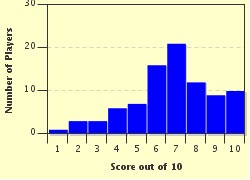Quiz Answer Key and Fun Facts
1. Who, according to The Stranglers in 1977 "Got an ice pick, that made his ears burn"?
2. In Bananarama's 1984 UK hit, he was waiting, and he was talking Italian. Who was he?
3. On their 1978 album "A Tonic For The Troops", the Boomtown Rats told us that this girl wasn't really loved by her famous World War II leader partner. Who was the poor neglected lass?
4. Whose eyes was Kim Carnes singing about in 1981?
5. Van Morrison named a now deceased American soul singer in a song in 1972. Van was, apparently, in heaven when this person smiled.
6. Marvin Gaye sung a beautiful ballad about three great American heroes who campaigned for liberty and justice. Who were the three (Given names only in the correct order of the title please)?
7. Bob Dylan's "Hurricane" released in 1975, was a protest against the trial and conviction of a man who was imprisoned for twenty years for a crime many believed he did not commit. Who was "The Hurricane"?
8. In Tori Amos' "Happy Phantom", this child actress, who once went over the rainbow, was taking Buddha by the hand. Who was she?
9. Which revolutionary leader was named by The Beatles in the lyric of their 1968 album track "Revolution"?
10. On his 1974 album "Goodbye Yellow Brick Road", Elton John sang a nostalgic ballad to one of his boyhood heroes. Who was "The great sequinned cowboy, who sings of the plains. Of round ups and rustlers and home on the range"?
Source: Author
Jennifer84
This quiz was reviewed by FunTrivia editor
agony before going online.
Any errors found in FunTrivia content are routinely corrected through our feedback system.

